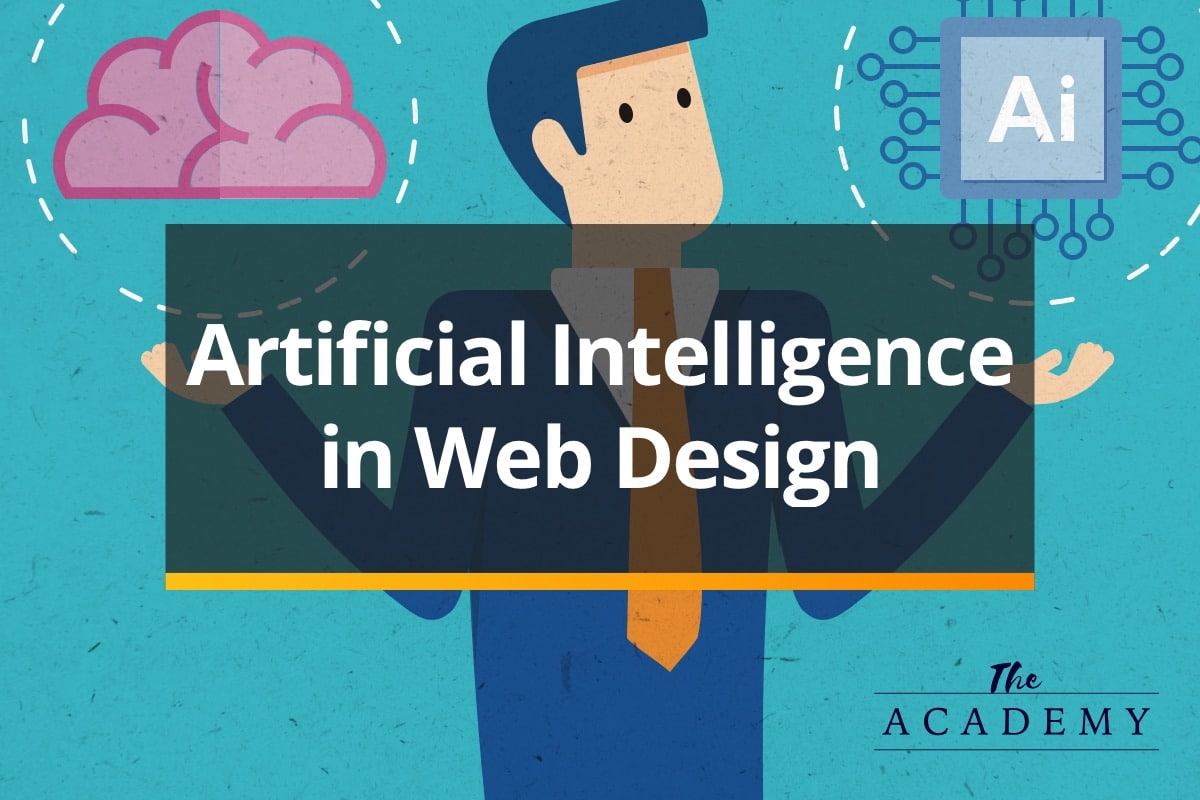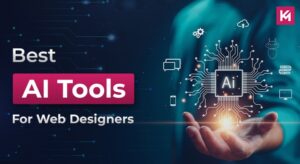Web design is one of the industries impacted greatly by the implementation of artificial intelligence (AI). AI is at the core of how websites are designed and developed, from simple repetitious tasks to the complex improvement of the user interface.
In this article, the author has tried to explain how AI is changing the face of web design, what it has to offer and what it has in store for web designers.
AI in web design: introduction
Artificial Intelligence, usually abbreviated as AI, is the reproduction in computing systems of human intelligence which is characterized by the capability to learn.
In web design, AI has been used to perform tasks, deliver content that is relevant to the user and enhance the usability of websites. AI is gradually becoming a norm in the design of websites with the progression of technology and its impact on the looks and usability of websites.
Web Design History
The history of web design can be dated back to the early 1990s when websites were mere, plain HTML documents. Web design over the years has evolved from static web content to dynamic content, with the adoption of CSS and JavaScript and the latest development being the mobile-first approach to web design.
Before the use of AI, there were many tedious tasks that designers were involved in, from the placement of the layout to the content of the page.
Basics of Artificial Intelligence
AI can be defined as a collection of technologies and approaches that have as their main goal to develop systems that will be able to solve problems requiring human-like intelligence. The most relevant types of AI in web design include: The most relevant types of AI in web design include:
Narrow AI: Specialized in a particular area of application, for instance, chatbots or recommendation systems.
Machine Learning: Programs that allow computers to learn new information from past data.
Deep Learning: One of the categories of machine learning in which the neural networks are utilized to mimic elaborate patterns.
These are some of the technologies that are commonly used in AI-based web design tools to support automation and scaling of personalization.
Web designers use artificial intelligence tools
There have been some advancements in AI that have enabled the designers of websites to engage the use of some AI tools that enable them to design efficient as well as good-looking websites. These tools use AI algorithms to help automate the processes and to present the project options. Notable AI tools include:
Adobe Sensei: Avails the use of artificial intelligence and machine learning to introduce automation in Adobe products and boost innovation.
Wix ADI (Artificial Design Intelligence): Employ the services of AI to produce website designs that are unique from the input given by the users.
The Grid: These include a web design assistant and a website building tool where layouts, colours, and images are selected by the tool from the content.
These tools have greatly adopted the design of websites since they make it easier for designers and even those who do not have any designing skills to design a good site.
Automating Web Design Tasks
AI helps in responsible for automated processes in web designing and thus saves a lot of time in constructing websites. Some of the tasks AI can automate include Some of the tasks AI can automate include:
Layout Design: AI can understand the content and recommend the best patterns with which to design the spaces, guaranteeing that the layout of a website is both esthetically stimulating and workably organized.
Color Selection: Therefore, based on the analysis of the site’s purpose and the viewership, AI can suggest the appropriate colors that can increase the viewer’s engagement.
Typography: Some possible suggestions that AI can make include suggesting better font combinations for better readability and better combinations with the rest of the design.
Such procedures do not only reduce workflow time but are also advantageous because design standard procedures are followed.
How Artificial Intelligence (AI) can improve or boost the User Experience (UX)?
A major aspect of web design is the user experience (UX) and AI is most prominent in improving it. Machine learning and data analysis in AI can bring about customization and proactivity towards the user. Key areas where AI enhances UX include: Key areas where AI enhances UX include:
Personalized Content: AI algorithms can therefore be used to determine the user’s behavior to present him with content that will answer to his or her content interests.
Chatbots: The use of chatbots that are built through Artificial Intelligence makes it easy to complement customer support, resulting in faster response times that would make customers satisfied.
Voice Interfaces: Since the adoption of voice interface devices, AI combines the voice interface in websites with more options given to the users.
These changes reflect an improved user experience for consumers which in turn boost conversion rates due to AI.
The application of AI in Conversion and Mobile Responsive Web Design
Responsive Web Design guarantees that a website can run on as many gadgets and screens as possible. AI can enhance this aspect of web design by AI can enhance this aspect of web design by:
Predictive Design Adjustments: AI working on the response to the user’s input can predict what of the design needs tweaking for a particular device.
Automated Testing: Some of the most popular AI tools for bits bring together the ability to preview, at once, how it looks on many devices, diagnose problems, and suggest remedies.
With the use of AI, designers can develop websites that are friendly not only in as much as responsiveness but also in user interactions.
Designing with AI: Strengths and Weaknesses
The analyzed opportunities of AI use in the framework of web design have their advantages and disadvantages.
Pros:
Efficiency: AI can do repetitive things so that designers can do other creative things.
Personalization: AI allows a user-specific, and thus more demanding, use, which increases satisfaction.
Scalability: AI platforms can process huge amounts of data, and thus can accommodate the operational scaling of design.
Cons:
Loss of Creativity: Challenges with the overuse of AI include; the risk of having more generic designs, and a dampening of the creative process.
Cost: AI technologies are relatively costly, especially to companies that are small in size.
Ethical Concerns: Social concerns especially, privacy and bias that may occur in the context of using AI have to be solved.
Understanding the correlation of strengths and weaknesses of AI is important to harness its capability to its optimum on a web designing platform.
AI-Driven Design Aesthetics
AI is in the process of influencing the aesthetics of design since it can predict trends and come up with creative ideas. AI algorithms can assess millions of design samples to identify emerging trends, such as AI algorithms can assess millions of design samples to identify emerging trends, such as:
Minimalist Design: AI notes the increasing popularity of minimalistic style that increases the convenience of the interface.
Dark Mode: AI looks into the issues of dark themes as a feature that has a high demand as it helps to save battery charges and reduce eye strain.
Analyzing large amounts of information, AI helps designers maintain the peculiarities of the tendencies and develop unique and impressive websites.
Personalization in Web Design
Customization or personalization is a core concept of most modern websites, and AI provides one of the means to achieving this. AI can:
Analyze User Behavior: Regarding the usage of AI, through analyzing the user activity, adequate content and design changes by the users’ preferences can be proposed.
Dynamic Content: Dynamic content can be implemented on a website depending on the user’s location, behaviour and other parameters, all due to the application of AI.
These personalization approaches enhance users’ engagement and lead to sales since people receive content and experiences they would likely respond to.




